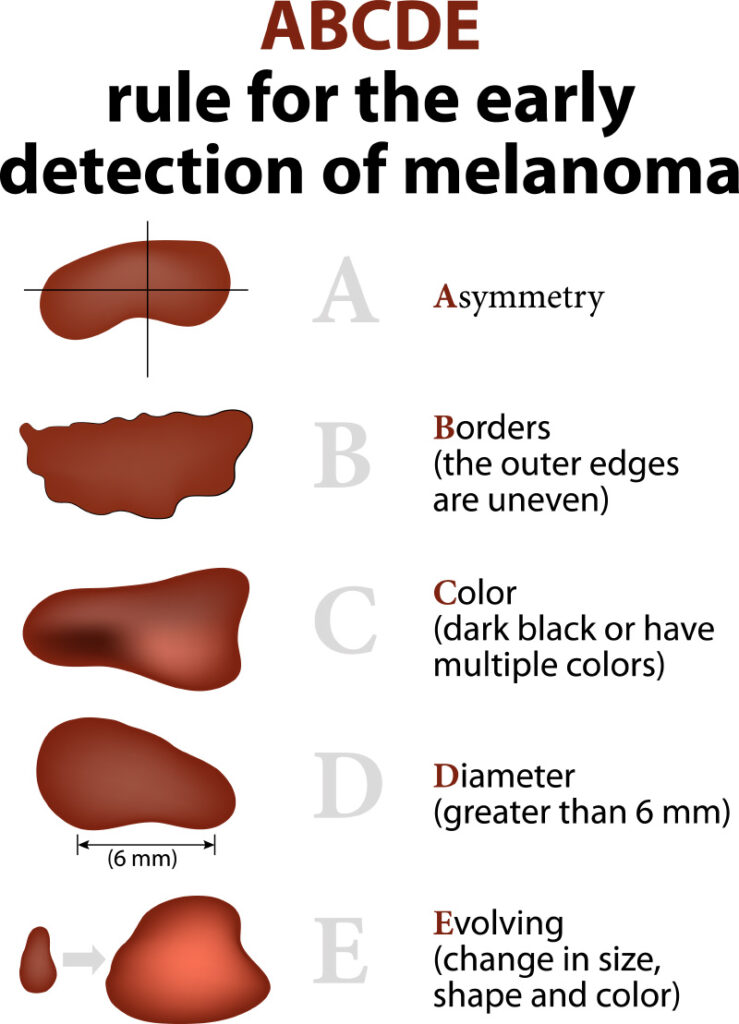Skin Cancer Prevention
Skin cancer is the most common form of cancer, affecting more than one million Americans every year. One in five Americans will develop skin cancer at some point in their lives. Skin cancers are generally curable if caught early. However, people who have had skin cancer are at a higher risk of developing a new skin cancer, which is why regular self-examination and doctor visits are imperative.
What to look for:
The key to detecting skin cancer is to notice changes in your skin. Look for:
- Large brown spots with darker speckles located anywhere on the body
- Dark lesions on the palms of the hands and soles of the feet, fingertips toes, mouth, nose or genitalia
- Translucent pearly and dome-shaped growths
- Existing moles that begin to grow, itch or bleed
- Brown or black streaks under the nails
- A sore that repeatedly heals and re-opens
- Clusters of slow-growing scaly lesions that are pink or red
The American Academy of Dermatology has developed the following ABCDE guide for assessing whether or not a mole or other lesion may be becoming cancerous.
- Asymmetry: Half the mole does not match the other half in size, shape or color
- Border: The edges of moles are irregular, scalloped or poorly defined
- Color: The mole is not the same color throughout
- Diameter: The mole is usually greater than 6 millimeters when diagnosed but may also be smaller
- Evolving: A mole or skin lesion that is different from the rest or changes in size, shape or color
If any of these conditions occur, please call us at 304-598-3888 to make an appointment to see one of our dermatologists right away. The doctor may do a biopsy of the mole to determine if it is or isn’t cancerous.

Patient Testimonial
Prevention
Roughly 90% of non-melanoma cancers are attributable to ultraviolet radiation from the sun. That’s why prevention involves:
- Staying out of the sun during peak hours (between 10 a.m. and 4 p.m.)
- Covering up the arms and legs with protective clothing
- Wearing a wide-brimmed hat and sunglasses
- Using sunscreen year round with a SPF of 30 or greater and sunblocks that work on both UVA and UVB rays. Look for products that use the term “broad spectrum.”
- Checking your skin monthly and contacting your dermatologist if you notice any changes
- Getting regular skin examinations. It is advised that adults over 40 get an annual exam with a dermatologist
Your Health. Your Skin. Your Care.
Download our guide to preventive care to learn how to prevent future issues.

